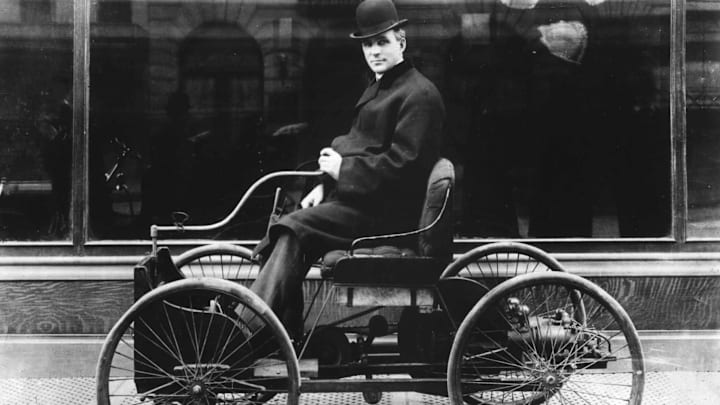"Mark my words: a combination airplane and motorcar is coming. You may smile, but it will come."
Auto magnate Henry Ford earned his fair share of ridicule in 1940 when he made that boisterous proclamation. The flying car may still be coming, but it's certainly taking its sweet time. Seven decades later, there's still no sign of it.
What makes Ford's confidence so mystifying is that the mogul had already spearheaded one attempt to put the common man in the sky, and that project had failed miserably. This is the story of that plane, the Ford Flivver.
In 1924, Ford acquired the Stout Metal Airplane Company and began working on various designs for civilian aircraft. Ford's aircraft division had some successes, like the Ford Tri-Motor transport plane that rolled out in 1926 and earned worldwide acclaim when Admiral Richard Byrd flew it over the South Pole in 1929.
Henry Ford had bigger goals for the division, though. He had already put automobile ownership within the average American's reach, so why not put a plane in every garage, too? The idea sounds ridiculous now – just as it probably did then – but Ford threw himself into the project. With engineer Otto Koppen at the helm, Ford's aircraft division went to work building "the Model T of the air."
Ford knew that successfully marketing a civilian plane would be tricky, so he charged Koppen with designing a small, light craft. (Koppen later said that Ford wanted a plane that would fit in his office.) By the summer of 1926, Koppen had come up with an aircraft that fit the bill. The Ford Flivver was a small single-seat plane that was just over 15 feet long and had a wingspan of just a hair under 23 feet. It ran on a 3-cylinder, 35-horsepower engine made by the Ford company Anzani, and it weighed just 350 pounds when empty.
As unlikely as the task initially sounded, Ford now had a prototype of his everyman's plane. Now he just needed to work out the kinks, show it to the world, and get every American in his own plane. Ford unveiled the Flivver on his 63rd birthday, July 30, 1926, with the company's trusty test pilot, Harry J. Brooks, at the controls.
When Brooks took that initial public flight in the Flivver, it looked like Ford had hit another home run. As Popular Science reported at the time, several novel features of the plane made it seem feasible that your average Joe could get behind the controls. The plane's flaps were arranged to give it maximum upward lift in small spaces, and a rear wheel made it possible to drive from one's home to a makeshift runway.
For the next year and a half, Brooks flew the original Flivver and two other prototypes as the company refined the design. Brooks loved the little plane so much that he actually used it to commute from his home to work. Brooks would tell the press, "Flying a plane like this is no more difficult than flying a large plane, except in this plane the pilot has to think a little faster."
Brooks was one of just two men ever to fly a Flivver. The other was Charles Lindbergh, and Lucky Lindy didn't share Brooks' enthusiasm for the design. Lindbergh later called the Flivver one of the worst planes he'd ever piloted.
Brooks even attempted to fly one of the Flivvers from Michigan all the way down to Miami on a single tank of gas in January 1928. Although rough weather forced a landing in Asheville, NC, the flight still set an American distance record for light planes. Brooks reported that the efficient little plane still had plenty of fuel to finish the trip; when the storm passed, he continued on to Florida.
Brooks' trip to Florida turned out to be the tragic end for the Flivver project. In late February 1928, Brooks was cruising over the ocean just south of Melbourne, FL, when the Flivver's engine locked up, smashing both plane and pilot into the water. The wreckage of the plane eventually washed ashore, but searchers never found Brooks' body.
Although Henry Ford moved quickly to announce that Brooks' death wouldn't alter the company's planes for the Flivver, the project quickly went south. Ford and the young test pilot had become friends, and reports surfaced that the mogul was distraught over Brooks' death. As Ford's guilt grew, he decided to end the Flivver project and get out of the light plane business entirely.
Ford's company later got back into the small aircraft business with projects like 1931's Stout Skycar series, but Ford was never able to put the common man in the air.
This post originally appeared in 2011.
